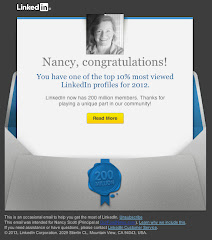Every week,
Square2Marketing adds a new video to its “Video Marketing Minute” series. On
April 17, Chief Marketing Officer Eric Keiles detailed five ways to easily
repurpose content and get more hits.
1. Pull a report
that indicates your highest performing content.
2. Pull a report
that shows which of your web pages has the highest traffic.
3. Repackage
high-performing content by adding a fresh cover page.
4. Create a new
call-to-action button.
5. Link the
call-to-action button to your refreshed content and post the button on high
performing web pages.
Now, really, what could be easier?
Source: Eric
Keiles, chief marketing officer, Square2Marketing.com/resources
-- scrubbed by MarketingBrillo





